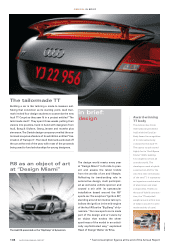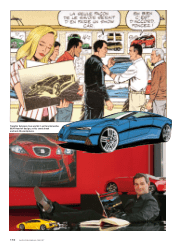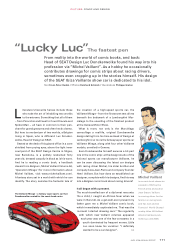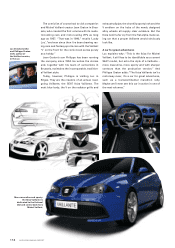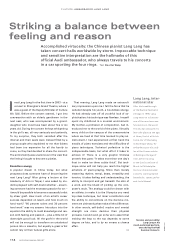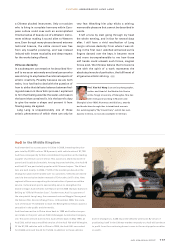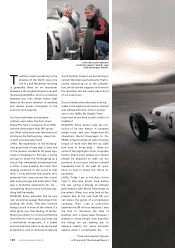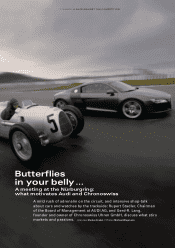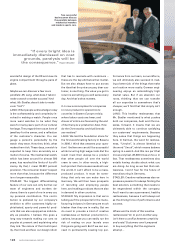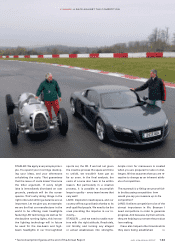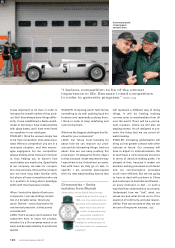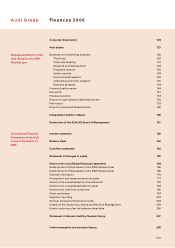Audi 2006 Annual Report Download - page 119
Download and view the complete annual report
Please find page 119 of the 2006 Audi annual report below. You can navigate through the pages in the report by either clicking on the pages listed below, or by using the keyword search tool below to find specific information within the annual report.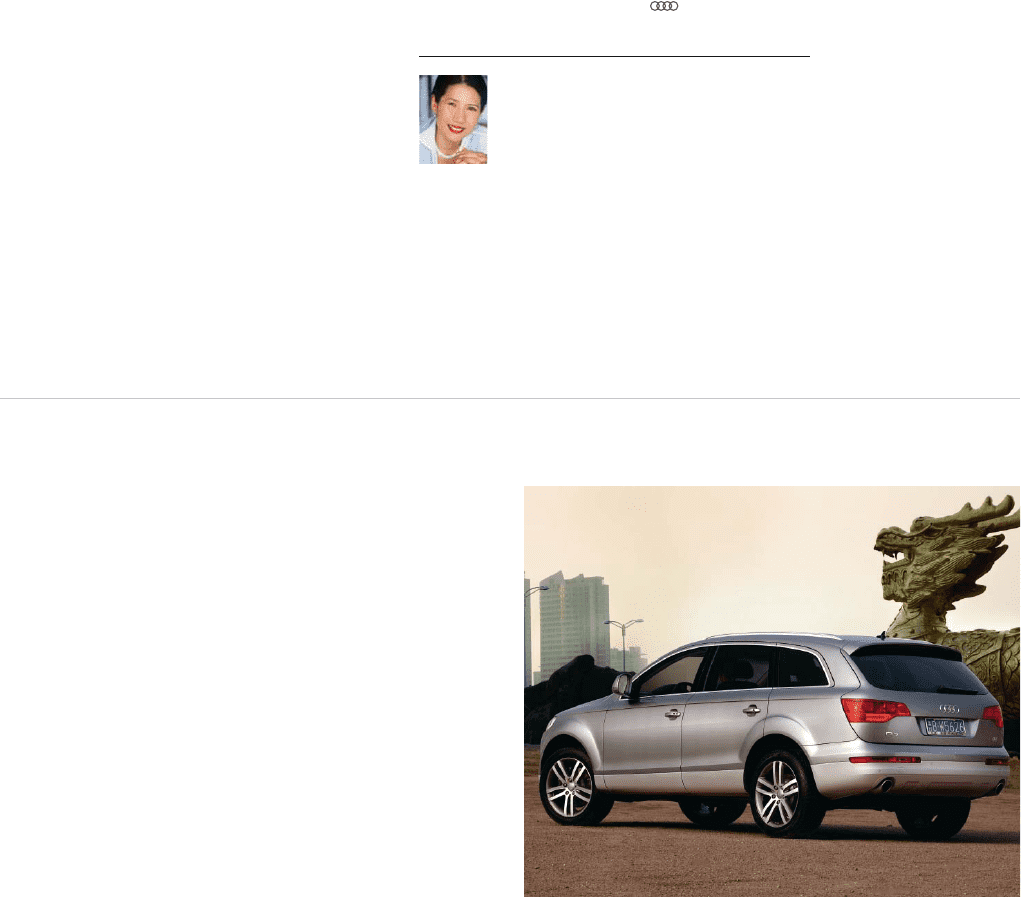
Prof. Xiao Hui Wang is an artist-photographer,
author and Head of the Media Arts Centre
at the Tongji University of Shanghai. She has
been living and working in Munich and
Shanghai since 1986. Numerous exhibitions, awards
and books have brought her international renown.
Her autobiography “My Visual Diary”, which has won
awards in China, is now also available in German.
CULTURE: AMBASSADOR LANG LANG
PHOTOS: AUDI
117AUDI 2006 ANNUAL REPORT
a Chinese plucked instrument. Only a musician
who is living in complete harmony within Euro-
pean culture could coax such an accomplished
Oriental sense of beauty out of a Western instru-
ment without making it sound alien to Western
ears. Even though many pieces demand extreme
technical bravura, the entire concert was free
from any boastful posturing, and was instead
imbued with innate musicality and deep respect
for the works being offered.
Virtuoso dexterity
In a subsequent conversation he described him-
self to me as an extremely emotional person who
was striving to emphasise the rational aspects of
artistic creativity. Possibly because we are both
twins, I too had had to deal with the question of
how to strike that delicate balance between feel-
ing and reason in the artistic process. I explained
to him that feeling was like the water, and reason
the barrel that contained it. It is the barrel’s duty
to give the water a shape and prevent it from
flowing away. He agreed.
Lang Lang is unquestionably one of those
artistic phenomena of which there can only be
very few. Watching him play elicits a stirring,
memorable pleasure that cannot be described in
words.
It left a tune by Liszt going through my head
the whole evening, and in fact for several days
after. I still have a vivid recollection of Lang
Lang’s virtuoso dexterity: from where I was sit-
ting in the first row, I watched entranced as his
fingers danced over the keys. It became more
and more incomprehensible to me how those
soft hands could unleash such forces, magical
forces even. We Chinese believe that to become
one with the spirit of a work represents the
absolute pinnacle of perfection, the fulfilment of
all genuine artistic striving.
Audi extended its success story in China in 2006, bettering the prior-
year total by 22,830 units or 38.8 percent, with vehicle sales of 81,708.
Audi has consequently further consolidated its position as the leading
supplier of premium cars in China. This success is shared by both im-
ported and locally built models. Among imported vehicles, the Audi A8
and Audi Q7 are particularly popular with Chinese buyers. The A4 and
A6 L are built locally. In 2006, 77,222 of the models produced at the
Changchun plant were handed over to customers. Vehicles are distrib-
uted via the exclusive dealer network of 124 outlets in 87 cities. New
regional offices are supporting the introduction of premium-calibre
service. Cultural and sports sponsorship serve to strengthen the
brand’s image: Audi vehicles will feature at the 2008 Olympic Games in
Beijing as “Official Premium Cars”. Furthermore, Audi is a partner of
the star pianist Lang Lang, the renowned actress Maggie Cheung and
the famous film director Zhang Yimou. In November 2006, the sculp-
ture of the Audi TT exhibited to mark the Beijing Motor Show caused a
sensation in the public and the media.
Audi has been active in China since back in 1988 and holds a ten per-
cent stake in the joint venture FAW-Volkswagen Automotive Company
Ltd. This joint venture built its first Audi vehicle back in May 1996: an
Audi 200, which was a modified version of the Audi 100 with V6 engine.
Of the 81,708 vehicles sold in China in 2006, the Audi A6 L accounted
for 61,686 units and the A4 for 15,536. In addition to these vehicles
built in Changchun, 4,486 imported vehicles were sold. By virtue of
positioning itself in the Chinese market very early on, Audi will continue
to profit from the continuing boom in cars in the most populous nation
on earth.
Audi in the Middle Kingdom



